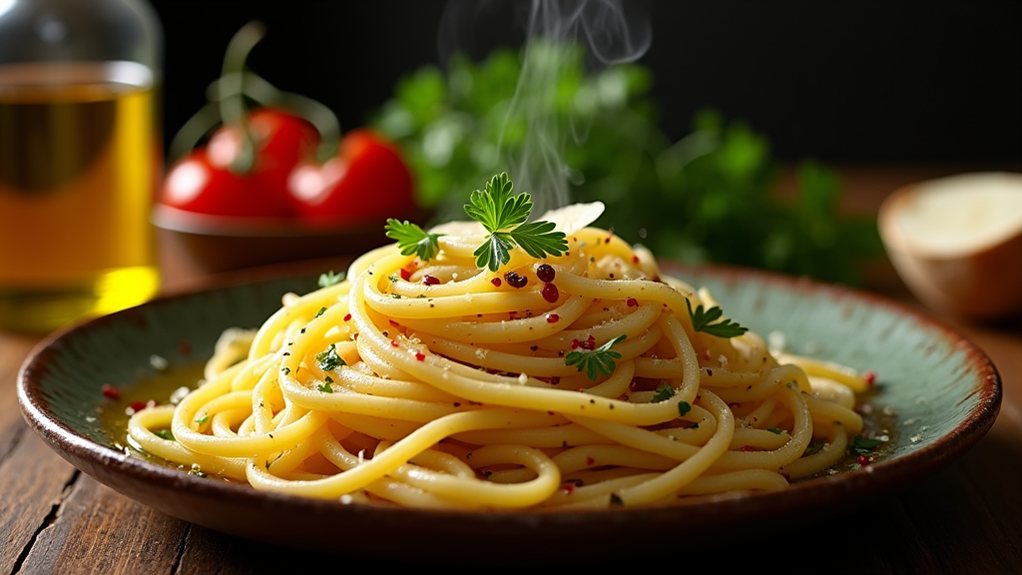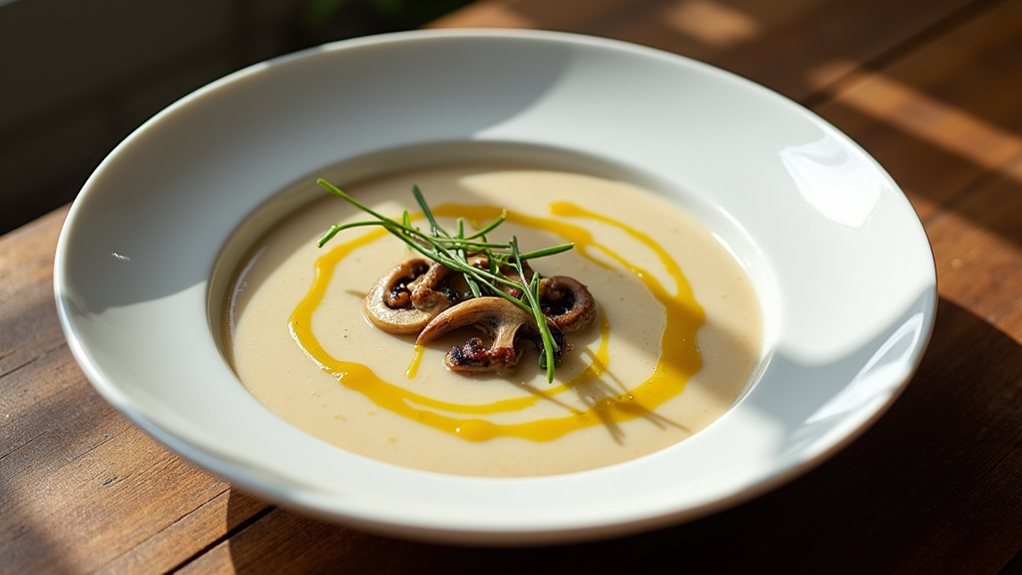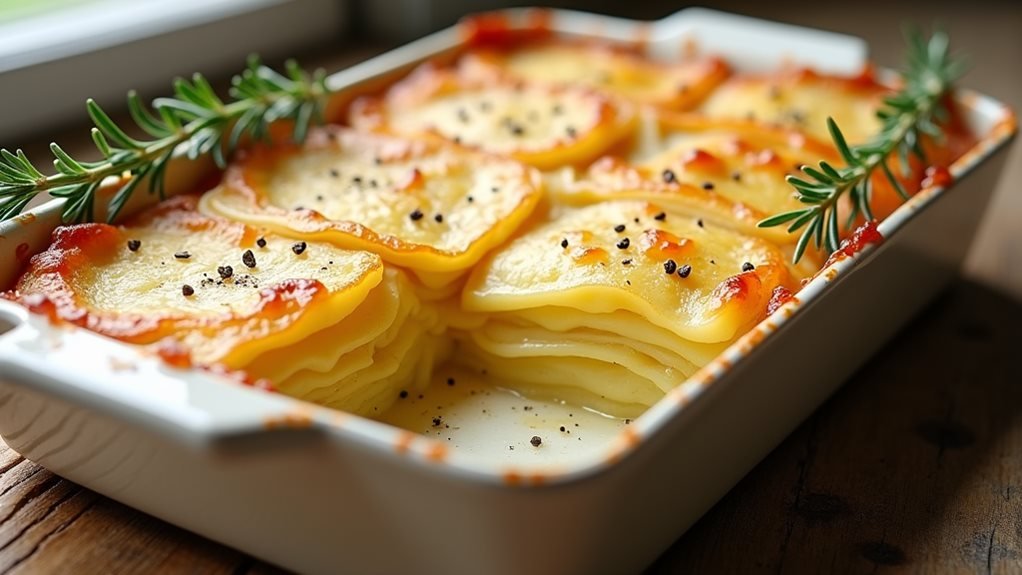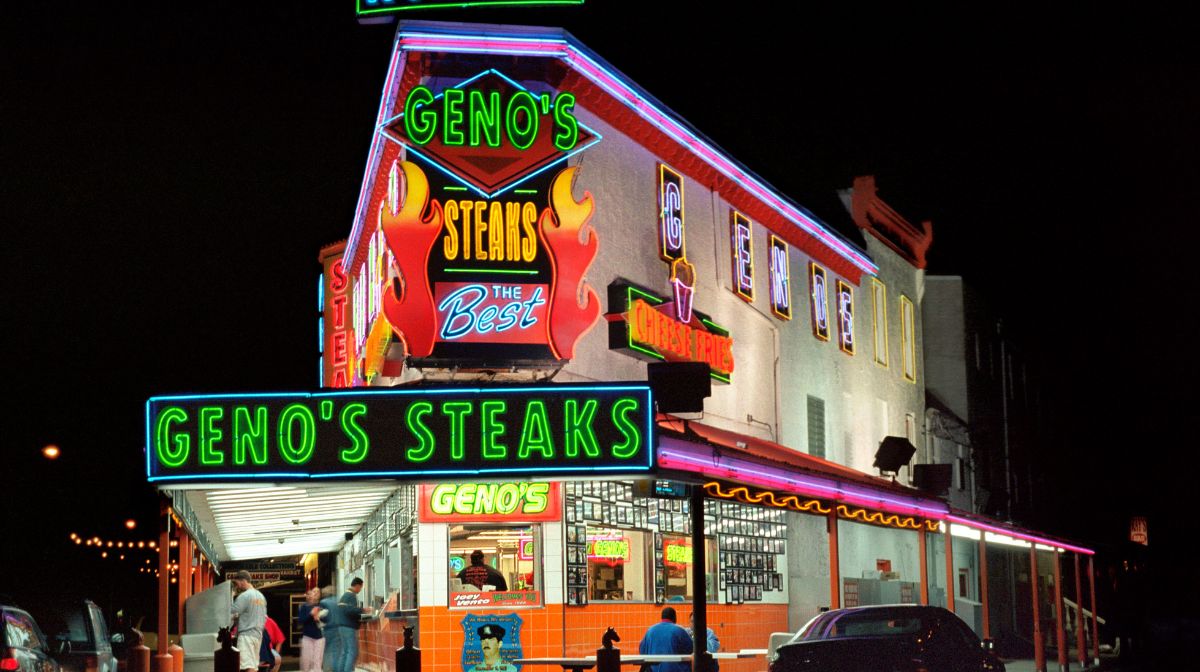Gordon Ramsay’s take on aglio olio has transformed this humble Neapolitan pasta dish into a masterclass in minimalist cooking. He’s stripped away unnecessary complexities while preserving the soul of this Italian classic. The secret lies not in fancy ingredients but in precise timing and temperature control. While many chefs have attempted their versions of this garlic-infused pasta, Ramsay’s method stands out for its elegant simplicity and fool-proof technique.
Origin in Naples, Italy
While Gordon Ramsay has popularized this version of aglio olio, the dish’s roots trace back to the streets of Naples in the late 19th century.
The traditional aglio olio emerged as a humble yet satisfying meal among Neapolitan workers who needed quick, affordable sustenance. This authentic Italian pasta recipe features just a few basic ingredients: spaghetti, garlic, olive oil, and red pepper flakes.
Spaghetti aglio olio became a staple in Italian households, passed down through generations before reaching international fame. Today, Gordon Ramsay’s aglio olio recipe stays true to these origins while adding subtle improvements that elevate the dish’s classic appeal.
Traditional Kitchen Method
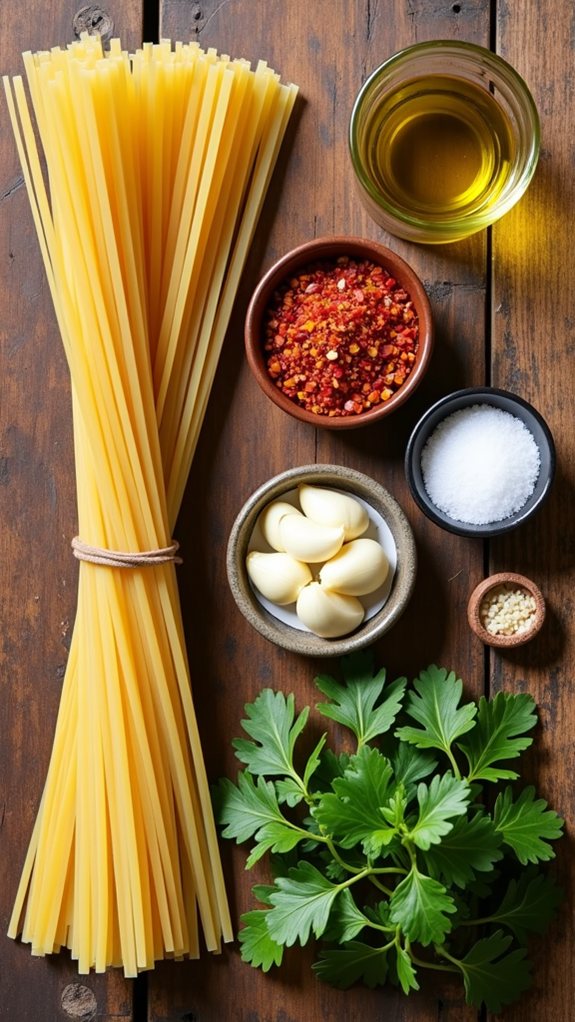
Gordon Ramsay’s Aglio Olio is a demonstration of the beauty of simplicity in Italian cuisine. With just a handful of quality ingredients, this classic pasta dish transforms into a masterpiece of flavors, where the garlic and olive oil create a harmonious blend that coats each strand of spaghetti perfectly.
The traditional kitchen method for preparing Aglio Olio requires attention to timing and temperature control. The key lies in properly cooking the garlic until it’s just golden brown and ensuring the pasta reaches the ideal al dente texture, creating the foundation for this beloved Italian dish.
- 1 pound dried spaghetti
- 1/2 cup extra virgin olive oil
- 6-8 cloves garlic, thinly sliced
- 1/2 teaspoon crushed red pepper flakes
- Salt for pasta water
- Fresh parsley, chopped
- Freshly grated Parmesan cheese
Bring a large pot of heavily salted water to a rolling boil and cook spaghetti according to package instructions until almost al dente.
Meanwhile, heat olive oil in a large sauté pan over medium heat for 3 minutes, then add sliced garlic and cook for 3-5 minutes until light golden brown.
Add red pepper flakes and cook for 30 seconds. When pasta is ready, transfer it directly to the pan using tongs, bringing along some pasta water. Toss the pasta with the garlic oil mixture, adding more pasta water as needed to create a silky sauce.
Finish with chopped parsley and grated Parmesan if desired.
The success of this dish heavily depends on the quality of olive oil used and the careful monitoring of garlic as it browns.
Keep a close eye on the garlic to prevent it from burning, which can make the dish bitter. Reserve more pasta water than you think you’ll need, as the starchy liquid is essential for achieving the right sauce consistency.
For best results, finish cooking the pasta in the pan with the garlic oil, allowing it to absorb the flavors while reaching perfect al dente texture.
Regional Recipe Differences
Depending on the region, Aglio Olio recipes can vary considerably in both ingredients and preparation methods.
While Gordon Ramsay’s aglio olio recipe stays true to the dish’s Neapolitan roots, other Italian regions incorporate their own twists. Northern Italian versions often use less garlic and more extra virgin olive oil, creating a lighter sauce.
Southern variations tend to be more robust, with some regions doubling the garlic content and adding breadcrumbs for texture.
Some areas improve their spaghetti aglio olio with local ingredients like bottarga in Sardinia or anchovies in Sicily.
Italian cooking techniques also differ by region – some chefs prefer to brown their garlic deeply, while others barely heat it.
The use of parsley varies too, with some regions incorporating it into the cooking process rather than using it as a garnish.
Quick Family Dinner Prep
Because of its straightforward preparation and minimal ingredients, Ramsay’s aglio olio makes an ideal weeknight family dinner that can be ready in under 30 minutes.
Parents can efficiently prep this easy garlic pasta while helping with homework or managing other evening activities.
The key to quick family dinner prep lies in organizing ingredients before cooking. Start by bringing water to boil while slicing fresh garlic and measuring olive oil varieties.
Once the pasta begins cooking, parents can prepare the sauce, ensuring perfect timing. The al dente pasta should finish cooking just as the garlic turns golden in the pan.
Gordon Ramsay’s aglio olio recipe proves that a delicious meal doesn’t require hours in the kitchen – just quality ingredients and proper timing.
Storeroom Temperature Guidelines
To maintain the quality of ingredients for aglio olio, proper storeroom temperature plays a crucial role.
When storing ingredients for Gordon Ramsay’s aglio olio recipe, keep olive oil varieties in a cool, dark place between 57-70°F (14-21°C) to preserve their delicate flavors.
Fresh garlic preparations should be stored at room temperature (60-65°F) in a well-ventilated area, while Parmesan cheese needs refrigeration at 40°F (4°C) to prevent spoilage.
For pasta types like spaghetti, maintain a dry storage area below 75°F (24°C) with humidity levels under 60%.
When learning how to make Gordon Ramsay aglio olio pasta, keep in mind that proper ingredient storage guarantees peak flavor development and food safety.
Check storage temperatures regularly and adjust ventilation as needed to protect these vital components.
Simple Ingredients, Authentic Taste
The beauty of Gordon Ramsay’s aglio olio lies in its elegant simplicity, requiring just a handful of high-quality ingredients to create an authentic Italian pasta dish.
His step-by-step recipe emphasizes the importance of using thinly sliced garlic, which releases its flavor gradually during cooking, and selecting premium extra virgin olive oil as the foundation of the sauce.
The harmonious blend continues with a careful measure of red chili flakes, creating a subtle heat that doesn’t overwhelm the dish.
For the finishing touches, chopped fresh parsley adds brightness and color, while freshly grated Parmesan cheese introduces a savory depth.
Each ingredient plays its crucial role, working together to transform basic components into a restaurant-quality pasta that’s both sophisticated and satisfying.
